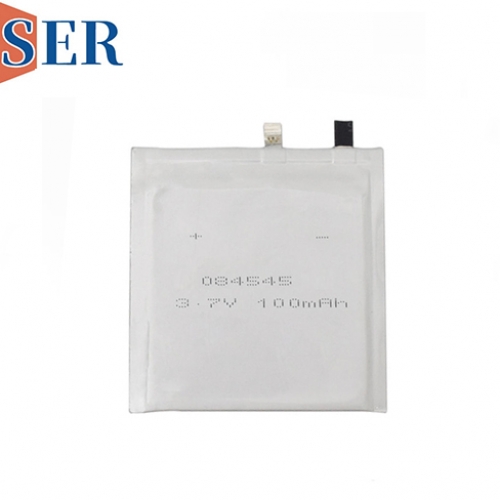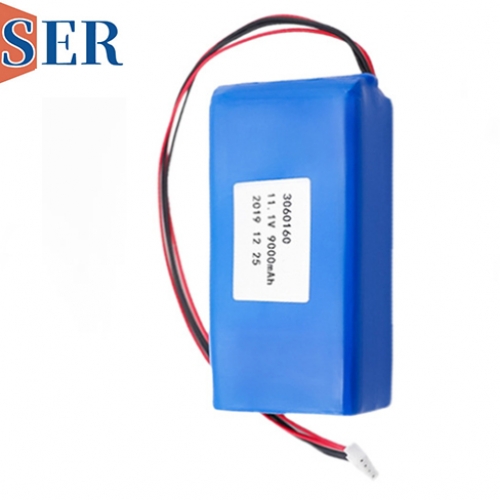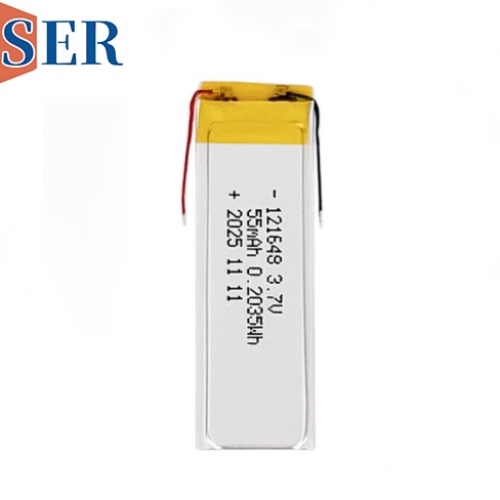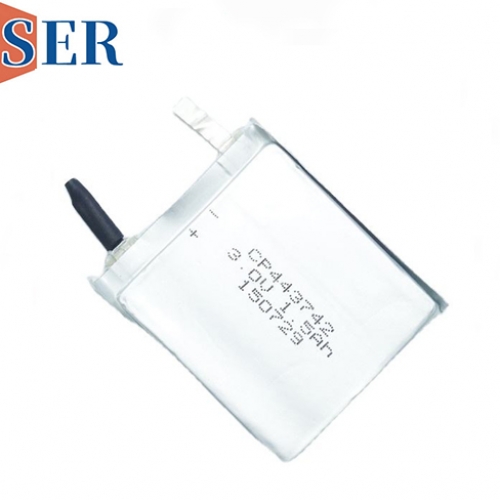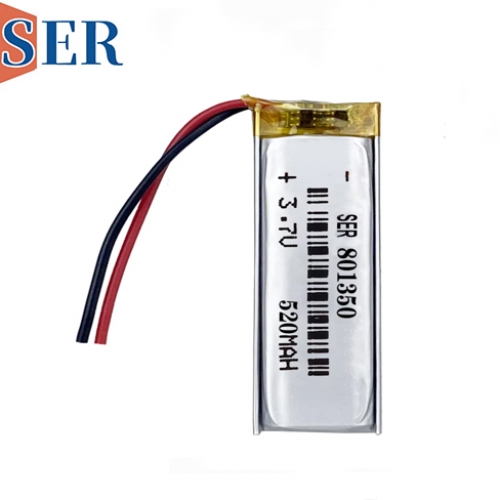Customized 3.0V Pouch Li-MnO2 Ultrathin Battery Cells CP303450 for RFID Tags and IOT devices
Customizing 3.0V Pouch Li-MnO2 Ultrathin Battery Cells for RFID Tags and IoT Devices: A Comprehensive Guide
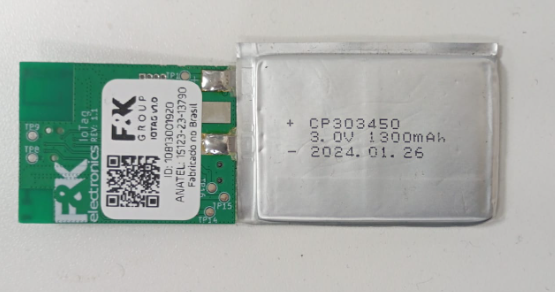
Introduction
The rapid advancement of technology has led to the proliferation of Internet of Things (IoT) devices and Radio Frequency Identification (RFID) tags. These devices are increasingly being used in various industries, including healthcare, logistics, retail, and manufacturing. One of the critical components that ensure the reliable operation of these devices is the battery. Specifically, 3.0V pouch Li-MnO2 ultrathin battery cells have emerged as a popular choice due to their compact size, high energy density, and ability to operate under extreme temperature conditions. This article delves into the customization of these battery cells for RFID tags and IoT devices, focusing on their performance in high-temperature (70℃) and low-temperature (-30℃) environments.
Understanding Li-MnO2 Battery Chemistry
Lithium Manganese Dioxide (Li-MnO2) Chemistry
Lithium Manganese Dioxide (Li-MnO2) batteries are a type of primary (non-rechargeable) lithium battery. They are known for their high energy density, long shelf life, and stable voltage output. The chemistry involves a lithium metal anode and a manganese dioxide cathode, with a non-aqueous electrolyte facilitating ion movement.
Advantages of Li-MnO2 Batteries
High Energy Density: Li-MnO2 batteries offer a high energy density, making them suitable for compact devices like RFID tags and IoT sensors.
Stable Voltage Output: These batteries provide a stable voltage output throughout their discharge cycle, ensuring consistent performance.
Long Shelf Life: Li-MnO2 batteries have a low self-discharge rate, allowing them to retain their charge for extended periods.
Wide Temperature Range: They can operate efficiently across a broad temperature range, making them ideal for applications in extreme environments.
Customization of 3.0V Pouch Li-MnO2 Ultrathin Battery Cells
Design Considerations
Customizing 3.0V pouch Li-MnO2 ultrathin battery cells for RFID tags and IoT devices involves several design considerations to ensure optimal performance, especially under extreme temperature conditions.
1. Size and Form Factor
RFID tags and IoT devices often require compact and lightweight power sources. Customizing the battery cells to fit specific form factors is crucial. Ultrathin pouch cells are particularly advantageous as they can be easily integrated into small devices without adding significant bulk.
2. Capacity and Energy Density
The capacity of the battery must be tailored to the power requirements of the device. Higher capacity batteries provide longer operational life but may increase the size and weight. Balancing capacity with the desired form factor is essential.
3. Temperature Tolerance
Given the requirement for operation in high-temperature (70℃) and low-temperature (-30℃) environments, the battery chemistry and materials must be selected to withstand these extremes. This includes choosing electrolytes and separators that remain stable and conductive across the specified temperature range.
4. Safety Features
Safety is paramount, especially in devices that may be exposed to harsh conditions. Incorporating features such as overcharge protection, thermal shutdown, and short-circuit prevention is critical.
5. Manufacturing Process
The manufacturing process must be optimized to produce ultrathin pouch cells with consistent quality. This involves precise control over electrode coating, cell assembly, and sealing to prevent leaks and ensure durability.
Material Selection
The materials used in the battery significantly impact its performance, especially under extreme temperatures.
1. Electrolyte
The electrolyte must have a wide operating temperature range. For high-temperature applications, electrolytes with high thermal stability are required. For low-temperature applications, electrolytes with low viscosity and high ionic conductivity at sub-zero temperatures are essential.
2. Separator
The separator must maintain its integrity and prevent internal short circuits across the entire temperature range. Materials with high thermal stability and mechanical strength are preferred.
3. Cathode and Anode Materials
The cathode (manganese dioxide) and anode (lithium metal) materials must be chosen to ensure stable performance under extreme conditions. Additives may be incorporated to enhance conductivity and thermal stability.
Performance Testing
Customized battery cells must undergo rigorous testing to validate their performance under specified conditions.
1. High-Temperature Testing
Batteries are subjected to temperatures up to 70℃ to assess their capacity retention, voltage stability, and safety. Prolonged exposure to high temperatures can accelerate aging, so long-term testing is essential.
2. Low-Temperature Testing
Testing at -30℃ evaluates the battery's ability to deliver power in cold environments. Key metrics include capacity retention, discharge rate, and the ability to maintain voltage stability.
3. Cycle Life Testing
Cycle life testing determines the number of charge-discharge cycles the battery can endure before its capacity significantly degrades. This is particularly important for applications where the battery may be subjected to frequent use.
4. Safety Testing
Safety tests include overcharge, short-circuit, and thermal abuse tests to ensure the battery does not pose a risk under abnormal conditions.
Applications in RFID Tags and IoT Devices
1. RFID Tags
RFID tags are used for tracking and identification in various industries. Customized 3.0V pouch Li-MnO2 batteries provide the necessary power for active RFID tags, enabling long-range communication and extended operational life.
Logistics and Supply Chain: RFID tags with reliable batteries ensure accurate tracking of goods, even in extreme temperature conditions during transportation and storage.
Healthcare: In healthcare settings, RFID tags are used for asset tracking and patient monitoring. Batteries that can withstand sterilization processes and operate reliably in varying temperatures are crucial.
2. IoT Devices
IoT devices encompass a wide range of applications, from environmental monitoring to smart home systems. Customized batteries ensure these devices function seamlessly in diverse environments.
Environmental Monitoring: IoT sensors deployed in remote or harsh environments, such as deserts or polar regions, require batteries that can operate reliably at extreme temperatures.
Smart Agriculture: IoT devices used in agriculture, such as soil moisture sensors, benefit from batteries that can withstand outdoor temperature fluctuations.
Industrial IoT: In industrial settings, IoT devices monitor equipment and processes. Batteries that can endure high temperatures near machinery are essential.
Challenges and Solutions
1. High-Temperature Challenges
At elevated temperatures, battery components can degrade, leading to reduced capacity and potential safety hazards.
Solution: Use of thermally stable materials and additives that enhance the thermal stability of the electrolyte and separator. Incorporating thermal management systems within the device can also help mitigate high-temperature effects.
2. Low-Temperature Challenges
Low temperatures can cause the electrolyte to freeze or become less conductive, reducing the battery's ability to deliver power.
Solution: Development of low-temperature electrolytes with additives that lower the freezing point and improve ionic conductivity. Additionally, designing batteries with lower internal resistance can enhance performance in cold environments.
3. Mechanical Stress
Ultrathin pouch cells are more susceptible to mechanical stress, which can lead to leaks or short circuits.
Solution: Reinforcing the pouch material and optimizing the cell assembly process to enhance mechanical durability. Implementing robust sealing techniques to prevent electrolyte leakage.
Future Trends
The demand for customized 3.0V pouch Li-MnO2 ultrathin battery cells is expected to grow as IoT and RFID applications expand. Future trends may include:
1. Advanced Materials
Research into new cathode and anode materials, as well as electrolytes, could lead to batteries with even higher energy densities and wider temperature ranges.
2. Smart Batteries
Integration of smart features, such as state-of-charge monitoring and self-healing mechanisms, could enhance the performance and safety of these batteries.
3. Sustainability
Developing more environmentally friendly battery chemistries and recycling methods will be crucial as the use of these batteries increases.
4. Miniaturization
Continued miniaturization of battery cells will enable their use in even smaller and more compact devices, expanding the range of potential applications.
Conclusion
Customizing 3.0V pouch Li-MnO2 ultrathin battery cells for RFID tags and IoT devices involves a comprehensive approach that considers design, materials, performance testing, and application-specific requirements. These batteries must be tailored to operate reliably in extreme temperature conditions, from 70℃ to -30℃, ensuring consistent performance and safety. As technology advances, the development of more advanced materials and smart features will further enhance the capabilities of these batteries, driving innovation in IoT and RFID applications. By addressing the challenges and leveraging emerging trends, manufacturers can produce battery cells that meet the evolving needs of these dynamic industries.

